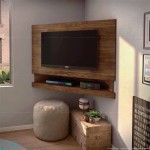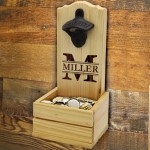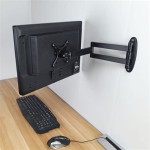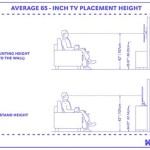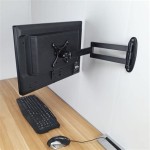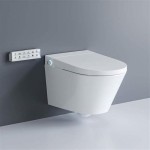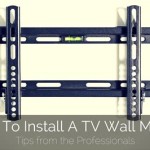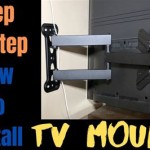BJ's Wholesale Club TV Wall Mounts: A Comprehensive Guide
Securing a television to a wall offers several advantages, including space optimization, enhanced viewing angles, and improved aesthetics. For BJ's Wholesale Club members, the availability of TV wall mounts presents a convenient and often cost-effective solution. This article provides a detailed examination of TV wall mounts available (or potentially available) through BJ's Wholesale Club, exploring various types, factors to consider during selection, installation processes, and troubleshooting common issues.
BJ's Wholesale Club typically carries a curated selection of products, and the availability of specific TV wall mount models can vary based on location and time. It is recommended to check the club's physical stores or online catalog for the most up-to-date inventory. Generally, the mounts offered are designed for a range of television sizes and weights, catering to diverse consumer needs.
Understanding Different Types of TV Wall Mounts
The selection of an appropriate TV wall mount hinges on understanding the different types available and their respective functionalities. The three primary categories are fixed, tilting, and full-motion mounts.
Fixed Mounts: These are the simplest and most cost-effective option. They hold the television flush against the wall, providing a minimalist appearance. Fixed mounts offer minimal adjustability, meaning the viewing angle is essentially locked in place. This makes them ideal for situations where the viewing area is directly in front of the wall and at eye level.
The primary advantages of fixed mounts are their low cost, ease of installation, and minimal space intrusion. However, their lack of adjustability can be a drawback if flexibility in viewing angles is desired. Furthermore, accessing the back of the television for cable management or device connections can be challenging once the television is mounted.
Tilting Mounts: Tilting mounts allow the television to be tilted vertically, typically forward, by a certain degree. This feature is useful for reducing glare from windows or lights and improving viewing angles when the television is mounted higher than eye level. Tilting mounts offer a compromise between fixed and full-motion mounts, providing some adjustability without the complexity and higher cost of a full-motion system.
Tilting mounts address the glare and viewing angle issues common with fixed mounts. They are also relatively easy to install, although they typically require more assembly than fixed mounts. The limited range of tilt can be a constraint, particularly if significant viewing angle adjustments are required. Accessing the back of the television remains somewhat challenging, though slightly easier than with a fixed mount.
Full-Motion Mounts: Also known as articulating mounts, full-motion mounts offer the highest degree of flexibility. They allow the television to be extended from the wall, swiveled left and right, and tilted up and down. This provides optimal viewing angles from virtually any position in the room. Full-motion mounts are particularly useful in large or irregularly shaped rooms where multiple viewing positions are common.
Full-motion mounts provide unparalleled flexibility and convenience. They simplify cable management and device connection by allowing easy access to the back of the television. However, they are generally the most expensive type of mount and require the most complex installation. Extended full-motion mounts can also be less aesthetically pleasing when fully retracted, as they may position the television further away from the wall compared to fixed or tilting mounts. Furthermore, cheaper full-motion mounts may lack the necessary sturdiness to support heavier TVs safely, making higher-quality versions a necessity.
Factors to Consider When Selecting a TV Wall Mount at BJ's
Choosing the right TV wall mount involves careful consideration of several factors to ensure compatibility, safety, and optimal performance. These factors include television size and weight, VESA compatibility, wall type, and desired viewing angles.
Television Size and Weight: The most critical factor is ensuring that the wall mount is designed to support the television's size and weight. The product packaging will specify the maximum screen size and weight capacity. Exceeding the weight limit can lead to mount failure, potentially damaging the television and posing a safety hazard. Always consult the television's specifications, which can usually be found in the user manual or on the manufacturer's website. Allow a small buffer when considering the weight, as listed weights may not always be perfectly accurate.
VESA Compatibility: VESA (Video Electronics Standards Association) defines the standardized mounting interface dimensions for televisions and monitors. The VESA pattern refers to the spacing of the mounting holes on the back of the television, measured in millimeters. The wall mount must be compatible with the television's VESA pattern to ensure proper alignment and secure attachment. VESA patterns are typically expressed as two numbers, such as 200x200mm or 400x400mm, indicating the horizontal and vertical spacing between the holes.
Check the television's specifications to determine its VESA pattern. Most wall mounts are designed to accommodate multiple VESA patterns, but it's essential to verify compatibility before purchasing. Some older or larger televisions may require specific adapters to be compatible with standard wall mounts. Always check both the TV and the mount specifications carefully.
Wall Type: The type of wall to which the television will be mounted is a crucial consideration. The most common wall types are drywall (also known as plasterboard), concrete, and brick. Drywall is the least sturdy and requires the use of appropriate anchors to ensure a secure installation. Concrete and brick walls are more solid but require specialized drilling equipment and anchors.
Many wall mount kits include hardware suitable for drywall installation, but it's essential to use high-quality anchors designed for the television's weight. For concrete or brick walls, it's necessary to use masonry drill bits and heavy-duty concrete anchors. If unsure about the wall type or installation process, it's advisable to consult a professional installer. Furthermore, it is important to locate wall studs even when using heavy-duty anchors. Using a stud finder can help locate wood or metal studs to further secure the mount.
Desired Viewing Angles: The desired viewing angles will determine the type of wall mount needed. If the viewing area is directly in front of the wall, a fixed mount may suffice. If some adjustment is needed to reduce glare or improve viewing from slightly off-center positions, a tilting mount is a better choice. For maximum flexibility and viewing from multiple positions, a full-motion mount is the most suitable option.
Consider the typical viewing habits and room layout when making this decision. Factor in the number of people who will be watching television simultaneously and the potential viewing positions they may occupy. This will help determine the necessary range of motion and adjustability required from the wall mount.
Installation and Troubleshooting
Installing a TV wall mount is a process that requires careful attention to detail and adherence to safety precautions. While many DIY enthusiasts can successfully install a wall mount, it's essential to assess one's skills and comfort level before attempting the installation. If unsure, consulting a professional installer is always recommended.
Installation Steps: The installation process typically involves the following steps: gathering necessary tools and materials, locating wall studs (if applicable), attaching the mounting brackets to the television, attaching the wall plate to the wall, and securing the television to the wall plate.
First, gather the required tools, including a drill, screwdriver, stud finder (if applicable), level, measuring tape, pencil, and safety glasses. Ensure that all necessary hardware, such as screws and anchors, are included in the wall mount kit. Carefully read the manufacturer's instructions before beginning the installation. Using the user manual that comes with the mount is critical.
Next, locate the wall studs using a stud finder. If mounting to drywall, it's essential to secure at least one side of the wall plate to a wall stud. If mounting to concrete or brick, this step is not necessary. Accurately mark the locations of the studs or anchor points.
Attach the mounting brackets to the back of the television, ensuring that they align with the VESA mounting holes. Use the appropriate screws provided in the wall mount kit. Do not overtighten the screws, as this could damage the television. Attach the wall plate to the wall, using the marked locations for the studs or anchor points. Use a level to ensure that the wall plate is perfectly horizontal. Secure the wall plate to the wall using the appropriate screws and anchors.
Finally, carefully lift the television and attach it to the wall plate. Secure the television to the wall plate using the provided locking mechanism or screws. Double-check that all screws are tightened securely and that the television is stable and level. Manage the cables neatly to avoid clutter and ensure that they are not putting any strain on the connections.
Troubleshooting Common Issues: Several common issues can arise during or after the installation process. These include an unlevel television, loose mounting brackets, and cable management problems.
If the television is not level, loosen the screws on the wall plate or mounting brackets and adjust the television until it is perfectly level. Retighten the screws securely. If the mounting brackets are loose, double-check that the screws are properly tightened and that the correct screws were used for the television's VESA pattern. If the cable management is messy, use cable ties, clips, or sleeves to organize the cables neatly. Consider running the cables through the wall for a cleaner appearance, but only if comfortable with advanced wiring techniques.
If any issues persist or if the installation process seems too complex, it's advisable to consult a professional installer. Attempting to force the installation or using incorrect hardware can lead to damage or injury.
By carefully considering the type of wall mount, television specifications, wall type, and following the installation instructions precisely, BJ's Wholesale Club members can successfully mount their televisions and enjoy the benefits of a streamlined entertainment setup. Always prioritize safety and consult a professional if needed to ensure a secure and reliable installation.

Sanus Decora Full Motion Wall Mount For Tvs Bj S Whole Club

Sanus Premium Tilting Tv Wall Mount For Large Tvs 50 120

Sanus Decora Full Motion Wall Mount For Tvs 32 55

Tv Wall Mounts Bj S Whole Club

Handy Tv Mounting Assistance Service Bj S Whole Club

Sanus Decora Wall Mount For Tvs 32 55 Bj S Whole Club

Handy Tv Mounting Assistance Service Bj S Whole Club

Secu Articulating Tv Monitor Wall Mount Bracket For Most Lg 32 42 47 50 55 Inch Led Lcd Plasma Tilt Swivel Bj2

Handy Tv Mounting Assistance Service Bj S Whole Club

Vevor Full Motion Tv Mount Fits For Most 26 55 Inch Tvs Swivel Tilt Horizontal Adjustment Wall Bracket With Articulating Arm Max Vesa 400x400mm Holds Up To 99 Lbs Us

